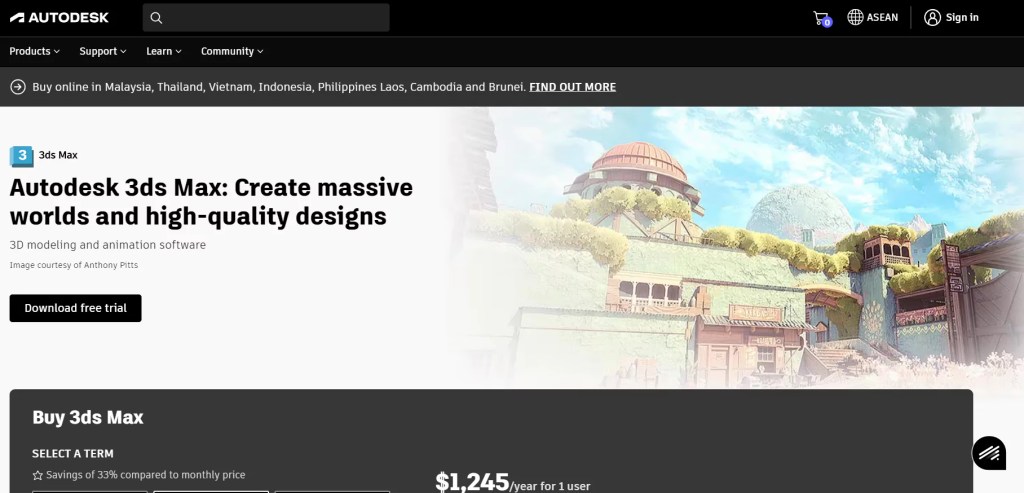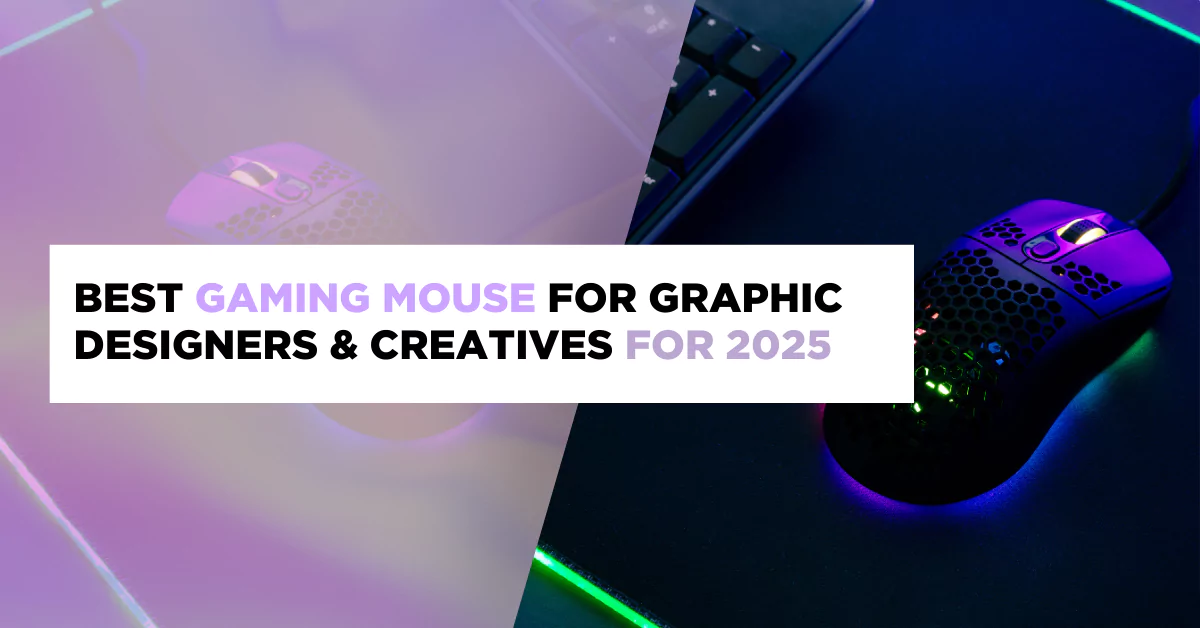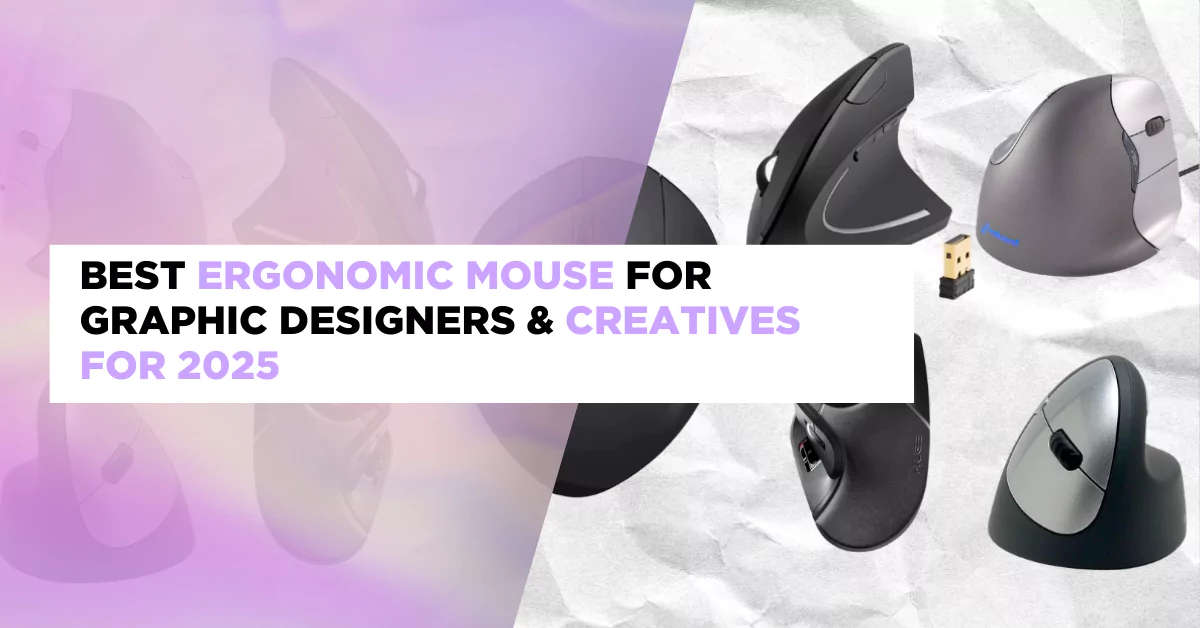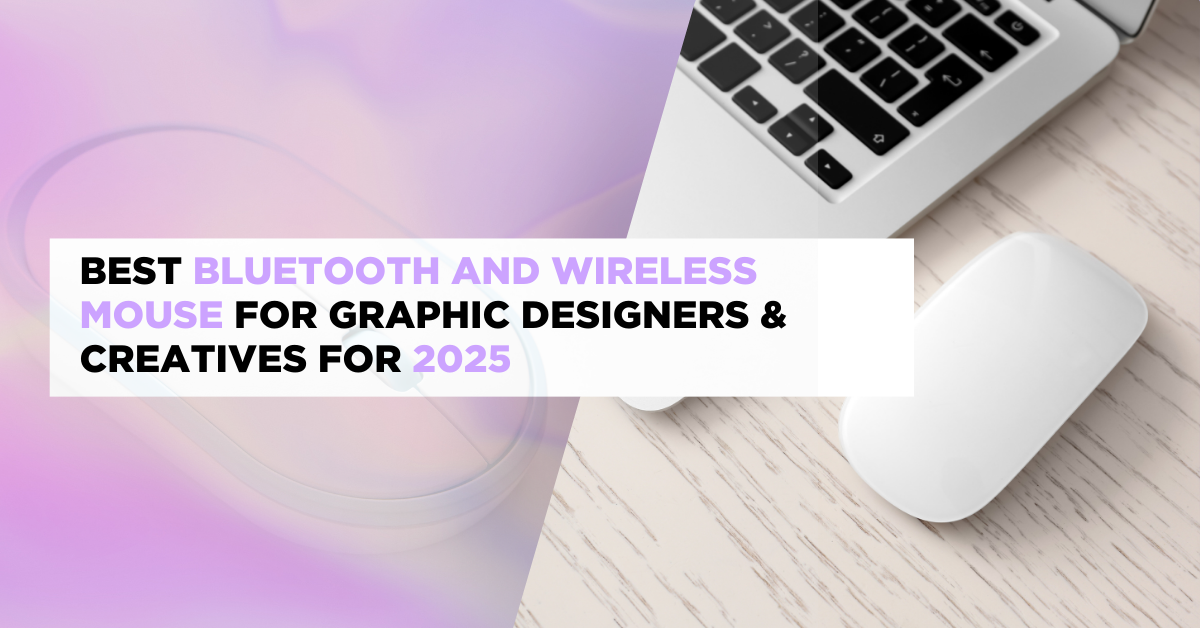
How to Choose the Right 3D Modeling Software
Entering the world of 3D modeling is like stepping into a vast and dynamic landscape, full of potential and possibilities. Yet, amidst this limitless field, the choice of software serves as the compass guiding your creative journey.
Selecting the ideal 3D modeling software is a crucial decision that can greatly impact your projects, influencing not only the ease and efficiency of your workflow but also the quality of your output.
With that, we have this guide for you so you can be aware of the important things you need to consider in choosing the best 3D modeling software that aligns with your needs as an artist.
User-Friendly and Outstanding Features
A user-friendly interface is an indispensable aspect of software, particularly for advanced users seeking to streamline their workflow and maximize efficiency. The selection of software should prioritize intuitive tools and features, facilitating the seamless execution of creative ideas into reality.
Efficient navigation within the software, aided by contextual menus and customizable hotkeys, plays a pivotal role in enhancing productivity. These elements enable users to swiftly access the desired functions and execute tasks with precision.
Choosing 3D modeling software should emphasize platforms that empower users to concentrate on their artistic endeavors rather than taking their time to navigate such tools. A software solution like this promotes simplicity and accessibility, ensuring that the creative process remains uninterrupted by unnecessary complexities.
Furthermore, a user-friendly interface fosters a positive user experience, thereby enhancing overall satisfaction. Software that prioritizes ease of use and intuitive design cultivates a sense of confidence and proficiency among users, enabling them to navigate the digital environment effortlessly.
Format and Compatibility of Files
The supported file format of the software is a critical consideration, particularly when engaging with clients and collaborators. Ensuring that others can easily access and view files is essential for effective communication and workflow efficiency. The inconvenience of exporting designs in an unreadable format can lead to delays and frustration, potentially undermining professional relationships.
Opting for 3D modeling software that is widely recognized and utilized within your industry and supplier community can mitigate compatibility issues. By selecting software that enjoys global popularity, the need for file conversion between formats can be minimized, saving time and simplifying the process. This approach streamlines communication and collaboration, facilitating seamless file exchange without the hassle of format conversions.
Prioritizing software that supports common file formats such as STEP, IGES, VDA, IDF, OBJ, or STL is advisable, particularly if the final model is intended for 3D printing. These formats are widely recognized and compatible with various software applications, ensuring broad accessibility and interoperability.
The ability to share files in formats that cater to the specific needs of clients is especially valuable for freelancers who work with diverse clients across different geographical regions. By accommodating varying preferences and requirements, freelancers can streamline communication and foster positive client relationships. This flexibility not only saves time for both parties but also enhances overall satisfaction and collaboration.
Technical Support
Technical support is another thing to consider when selecting 3D modeling software for your business or company. As you engage with such software, encountering technical issues over time is inevitable, and the inability to resolve them promptly can disrupt your workflow significantly.
Having access to reliable technical support ensures that whenever you encounter errors or challenges, you can seek assistance from the software provider’s technical team. Before committing to a specific modeling software, it’s necessary to verify that the provider offers comprehensive technical support to its customers.
Choosing software without technical support can be risky, as technical errors are common occurrences that can interfere with progress and productivity. Without adequate support, resolving these issues independently can be time-consuming and may result in prolonged downtime.
In addition to direct technical support, many 3D modeling software providers also offer a comprehensive FAQ section. This resource serves as a valuable self-help tool for users, addressing common queries and providing solutions to frequently encountered issues. Whether you’re a beginner or an experienced user, consulting the FAQ section can help you troubleshoot problems efficiently and continue your work uninterrupted.
Data Management
Managing data effectively is important when working in a team environment, as it helps prevent unintentional errors such as overwriting each other’s work or sending incorrect revisions to collaborators or manufacturers. These seemingly minor mistakes can result in significant time and financial losses, including the production of defective parts and delays in project timelines.
One common 3D modeling mistake that can lead to such errors is the failure to implement proper data management practices. For instance, if a designer accidentally sends an incorrect design to the engineering team, subsequent work conducted based on this flawed design can result in costly rework and delays.
To mitigate such risks, implementing a strong Product Data Management (PDM) system within the 3D modeling tool is essential. A PDM system helps track and manage data revisions, ensuring that team members are always working with the latest and most accurate versions of project files. By automatically saving and organizing data as team members work on projects, a PDM system minimizes the likelihood of errors and discrepancies.
Furthermore, software solutions like SelfCAD offer additional benefits by providing a centralized platform for managing existing, in-progress, and new projects, as well as facilitating training activities. By consolidating all project-related tasks and resources in one place, SelfCAD streamlines workflow management and enhances team productivity.
Rendering Capability
Rendering capabilities are a crucial aspect of 3D modeling software, as they enable users to transform their models into visually striking images or animations. While creating intricate 3D models is essential, the ability to render them efficiently is equally important in captivating the audience and conveying the intended message effectively.
When selecting 3D modeling software, it’s a must to prioritize options that offer great rendering capabilities. These capabilities encompass a range of features and techniques designed to enhance the visual appeal of rendered images or animations.
One key feature to look for in rendering software is real-time rendering. Real-time rendering allows users to preview changes to their models instantly, providing immediate feedback on adjustments to materials, textures, and lighting. This feature facilitates a more efficient workflow, enabling users to fine-tune their designs with precision and confidence.
Another important rendering technique to consider is ray tracing, which simulates the behavior of light rays to produce highly realistic and accurate renderings. Ray tracing technology mimics the way light interacts with surfaces and objects in the real world, resulting in lifelike reflections, shadows, and refractions. By incorporating ray tracing into the rendering process, software can generate stunning visual effects and achieve unparalleled levels of realism.
Customizable lighting is also a critical aspect of rendering capabilities. The ability to manipulate light sources, adjust their intensity and color, and control shadows and highlights allows users to create dynamic and captivating lighting setups tailored to their specific needs. Whether simulating natural sunlight or crafting dramatic studio lighting, customizable lighting tools empower users to enhance the visual impact of their rendered scenes.
Speed and Performance
Performance and speed are crucial things to consider when selecting 3D modeling software, especially for advanced users who work with complex models and demand optimal workflow efficiency. The ability of software to handle intricate designs swiftly and seamlessly directly impacts productivity and the user experience.
One key feature to look for in 3D modeling software is multi-threading support. Multi-threading allows the software to distribute processing tasks across multiple CPU cores simultaneously, harnessing the full potential of modern hardware. By leveraging multi-threading, software can efficiently handle computationally intensive operations such as mesh processing, rendering, and simulations, resulting in faster overall performance and reduced processing times.
Additionally, GPU acceleration is another essential aspect of performance optimization in 3D modeling software. GPU acceleration offloads certain computing tasks from the CPU to the graphics processing unit (GPU), which is specialized for parallel processing and can handle large volumes of data more efficiently. By harnessing the power of the GPU, software can accelerate rendering times, improve viewport responsiveness, and enhance overall performance, particularly when working with complex scenes or high-resolution textures.
Price and License
Price and licensing are also major factors to consider when choosing 3D modeling software, as they directly impact your budget and access to features. Understanding the different pricing models and license types available can help you make an informed decision that aligns with your needs and expectations.
One option is free or open-source software, which allows users to access basic 3D modeling functionality without any upfront cost. These software options are often community-driven and may lack advanced features or technical support, but they can be suitable for beginners or enthusiasts with limited budgets.
Subscription-based models involve paying a recurring fee to access the software, typically on a monthly or annual basis. This pricing model often includes regular updates and technical support, making it ideal for professionals who require ongoing access to the latest features and improvements. However, subscription fees can add up over time, so it’s essential to consider the long-term costs.
Alternatively, some 3D modeling software is available for a one-time purchase, allowing users to pay a single upfront fee for continuous access to the software. This option can be cost-effective in the long run, especially for users who plan to use the software for an extended period without the need for frequent updates or technical support.
Per-seat licensing models charge a fee for each user or seat that accesses the software. This pricing model is common in enterprise environments where multiple users require access to the software, and costs can vary depending on the number of seats purchased.
When evaluating pricing and licensing options, it’s essential to consider not only the upfront cost but also the long-term implications. Be sure to review the terms and conditions of the license, including usage rights, limitations, updates, and renewals, to ensure that they align with your needs and expectations.
Short Learning Curve
When selecting 3D modeling software for yourself or your team, prioritizing a short learning curve is essential for maintaining productivity and workflow continuity. Even if you possess a basic understanding of 3D modeling principles, opting for software that is intuitive and easy to learn ensures smooth adoption and minimizes disruptions to your work process.
A key consideration when assessing the ease of learning software is the consistency of its user interface. A consistent user interface promotes familiarity and reduces the cognitive load associated with navigating the software. Look for software where the layout and functionality are logically organized and follow a consistent design language from start to finish. This makes it easier for users to locate tools and features, streamlining the modeling process and enhancing efficiency.
In addition to a consistent user interface, consider selecting 3D modeling software that offers interactive tutorials or online courses. These resources can be invaluable for users seeking to familiarize themselves with the software’s features and workflows quickly. By providing guided instruction and practical examples, interactive tutorials empower users to master the software more efficiently and effectively.
Best 3D Modeling Softwares in 2024
Blender

Blender is recognized as the leading free 3D modeling software, widely embraced by animators for its extensive capabilities and open-source nature. Developed collaboratively by a global community, Blender is available for personal and commercial use, catering to both hobbyists and professionals.
Initially popular among enthusiasts for creating animated films with dramatic scenes, Blender has evolved to attract major production companies, now frequently used in high-budget film visual effects. It stands out by offering a comprehensive toolset that covers the entire 3D production pipeline, including modeling, rigging, animation, simulation, rendering, compositing, motion tracking, and video editing. Its unique 2D animation integration further enhances project versatility.
Blender’s extensive pipelining capabilities make it ideal for collaborative projects, allowing artists to work on different scene components independently. Its open-source nature fosters continuous development and improvements by the community, keeping it a top choice for various applications like modeling and 3D printing.
One of Blender’s notable features is EEVEE, a real-time rendering engine that simplifies and speeds up the creation of high-quality animations and effects. Although Blender has a steep learning curve, its free access across multiple platforms makes it an excellent option for beginners and professionals alike.
ZBrush

ZBrush is a highly innovative and intuitive 3D modeling software that has transformed digital sculpting with its real-time brush system, allowing users to manipulate digital clay. This method, akin to ‘virtual claymation,’ enables the creation of detailed and intricate models, making ZBrush a popular tool for 3D printing.
The software is ideal for those who prioritize artistic expression and design, offering a unique approach that creates objects with a hand-crafted feel. Unlike other 3D modeling tools that may produce more uniform results, ZBrush’s organic sculpting method is perfect for generating new shapes and meticulously recreating existing ones. This focus on detailed sculpting results in high-quality artistic output, establishing ZBrush as a top choice for 3D printing.
While initially appearing complex, ZBrush simplifies the modeling process for beginners through its intuitive and natural interface, especially when using pressure-sensitive pens and graphics tablets. This makes it popular among concept artists, filmmakers, and game developers who need to create lifelike models.
A notable feature of ZBrush is its non-linear production path, which offers flexibility by allowing users to revert to any previous design state and make changes. This fosters a creative environment conducive to experimentation and repetitive improvements without the risk of losing prior work.
ZBrush is available via subscription or as a one-time purchase with a lifetime license, providing options that cater to various preferences and needs. Its adaptability and powerful features make it a valuable tool for professionals in fields like concept art, film, and game development, who require a strong solution for creating detailed 3D models.
SketchUp

SketchUp stands out as a versatile and user-friendly 3D modeling software that appeals to a broad spectrum of users, from beginners to seasoned professionals. Its straightforward interface makes it particularly accessible for new users, enabling them to quickly learn the basics and start creating with minimal frustration. This ease of use is balanced by strong features that provide the precision and flexibility required by experienced artists, architects, and designers for detailed and complex projects.
One of the key highlights of SketchUp is its user-friendly interface. The software’s simple and intuitive design ensures that even those new to 3D modeling can easily understand and navigate the tools available. This eliminates the steep learning curve often associated with other 3D modeling software, making SketchUp a welcoming option for beginners.
Additionally, the hands-on learning approach facilitated by extensive tutorials further simplifies the process. These tutorials guide users step-by-step from basic concepts to more advanced modeling skills, ensuring that they can quickly progress and start working on more complex projects with confidence.
SketchUp is renowned for its ability to perform detailed and accurate modeling. This makes it particularly well-suited for applications that require high precision, such as 3D printing and architectural design. In these fields, exact measurements are crucial, and SketchUp’s tools provide the necessary accuracy to meet these demands.
Furthermore, the software’s flexibility allows users to customize their models extensively, making it an ideal choice for those who prefer to build 3D objects from scratch. This capability supports the creation of highly detailed and unique designs, tailored to the specific needs of each project.
While SketchUp may not be specifically designed for interior or landscape design, it offers a wide range of applications that cater to various types of projects. Users can construct anything from large-scale architectural models to intricate objects like furniture, enjoying complete creative freedom throughout the process.
This versatility makes SketchUp a powerful tool for a variety of design needs, allowing users to explore and realize their creative visions, whether they involve designing a towering skyscraper or a simple, yet elegant, piece of furniture.
SketchUp offers several versions of its software, each tailored to different user needs and levels of professional use. SketchUp Free is a browser-based version that is perfect for home users and those looking to quickly prototype their concepts without investing in software. SketchUp Go provides subscription-based access for iPad and web users, offering the flexibility to model on the go.
For more comprehensive professional use, SketchUp Pro is available, offering a toolset accessible via browser, desktop, and tablet. Finally, SketchUp Studio, which is exclusive to Windows, includes advanced tools for creating photorealistic models and animations, making it ideal for high-quality visualizations and professional-grade projects.
Autodesk Maya

Autodesk Maya stands out as a premier 3D graphics software, particularly renowned in the animation industry for its capabilities and extensive feature set. As one of the earliest commercial 3D rendering systems, Maya has been important in introducing advanced features such as hair and fur simulation, setting standards that have been adopted in numerous high-profile productions, including popular shows like Stranger Things.
Maya is widely regarded as an industry-standard tool due to its comprehensive suite of professional-level features. Beyond basic modeling and rendering, it excels in character creation and animation, offering sophisticated tools for movement and dynamics. These capabilities extend to simulating natural phenomena like water, fire, sandstorms, and explosions, making it a preferred choice for VFX artists and animators working on complex visual effects sequences.
Recent updates to Maya have introduced the Bifrost procedural effects system, enhancing its capability to create complex elements using dynamic solvers. This feature allows artists to simulate and control intricate effects within their scenes, adding depth and realism to their projects.
Once scenes are constructed and effects are defined, Maya supports photorealistic rendering through the Arnold RenderView system, delivering stunning visual results that meet the high standards of professional production.
Despite its powerful feature set, Maya’s complexity and less intuitive interface make it less accessible for beginners compared to other 3D modeling software like 3ds Max or Blender. Its extensive capabilities require a steep learning curve, demanding dedication and experience to fully leverage its potential. However, for professionals who require Hollywood-grade precision and craftsmanship in their work, Maya offers unparalleled tools and functionalities that justify the learning investment.
Similar to Blender, Maya is available across multiple platforms including Windows, Mac, and Linux, catering to diverse user preferences and workflows. Autodesk offers three subscription options for Maya, allowing users to choose between monthly, annual, or tri-annual payment plans. This flexibility enables users to select a subscription model that best suits their budget and project requirements, ensuring ongoing access to updates and support from Autodesk.
Autodesk 3ds Max

Autodesk 3ds Max is highly regarded as a top choice among 3D modeling software, particularly favored by game developers, interior designers, and architects for its modeling, texturing, and meshing tools. It shares a pedigree with other Autodesk products like Maya, Fusion 360, and AutoCAD, making it a versatile option that also serves well in 3D printing applications.
3ds Max is distinguished by its emphasis on modeling, offering professional-grade tools that cater to a variety of industries requiring precise and detailed 3D design work. For game developers, interior designers, and architects, it provides essential features such as skeletons and inverse kinematics, cloth simulation, skinning, and character controls for bipedal motion. These capabilities are crucial for creating realistic animations and simulations in architectural visualization and game development.
A standout feature of 3ds Max is its extensive plugin system, which allows users to expand the software’s functionality with third-party modules. While some plugins are available for free, the most strong and specialized tools typically require paid licenses. This flexibility enables users to customize their workflow and add specific features or rendering modes that may not be native to the core software, enhancing productivity and creative possibilities.
3ds Max supports various modeling techniques including conventional polygon construction, NURBS (Non-Uniform Rational B-Splines), and patch surfaces. This versatility in modeling approaches ensures that users can choose the method best suited to their project requirements, whether creating intricate organic shapes or precise architectural details.
Rendering in 3ds Max is supported by a wide range of rendering systems, including industry standards like Renderman (developed by Pixar) and mental ray. This compatibility ensures that users can achieve high-quality visual output tailored to their specific needs, whether aiming for photorealistic architectural renderings or stylized game assets.
While 3ds Max offers extensive features and customization options, it is acknowledged as a complex software with a steeper learning curve compared to more user-friendly alternatives. This complexity can pose challenges, especially for new users transitioning from simpler modeling tools. Additionally, the reliance on plugins can sometimes lead to stability issues, particularly when using complex plugins that strain system resources, potentially causing occasional instability.
An important consideration for users is that 3ds Max is exclusively available for Windows operating systems, limiting its accessibility for macOS and Linux users. Autodesk offers flexible subscription plans for 3ds Max, including monthly, annual, and three-year options, allowing users to choose a payment model that suits their budget and project duration.
Adobe Dimension

Adobe Dimension is a specialized 3D rendering and design software that focuses on creating photorealistic 3D images and scenes. It’s part of Adobe’s Creative Cloud suite, designed specifically for graphic designers, marketers, and visual artists who need to integrate 3D elements seamlessly into their projects without the complexity of traditional 3D modeling software.
Adobe Dimension simplifies the process of creating 3D visuals by offering intuitive tools and a user-friendly interface. Here are some of its notable features:
3D Modeling and Design
Users can create 3D models directly within Adobe Dimension or import existing 3D models from other sources like Adobe Stock or third-party sources. The emphasis is on assembling scenes rather than intricate modeling, making it accessible for those without extensive 3D modeling experience.
Material and Texture Editing
Dimension provides tools for applying and adjusting materials and textures to 3D models. This includes realistic surface properties like glossiness, reflectivity, and transparency, which are essential for achieving photorealistic results.
Lighting and Environment Setup
Users can easily set up lighting and environmental conditions to simulate real-world lighting scenarios. This helps in creating realistic shadows, reflections, and lighting effects that enhance the overall visual appeal of the rendered scenes.
Integration with Adobe Creative Cloud
Dimension seamlessly integrates with other Adobe Creative Cloud applications like Photoshop and Illustrator. This allows for easy importing of 2D graphics and textures, as well as direct editing and integration of rendered 3D scenes into larger projects.
Rendering and Output
Adobe Dimension uses Adobe’s powerful rendering engine to generate high-quality, photorealistic images. Users can preview their designs in real-time and adjust settings before final rendering. Outputs can be in various formats suitable for web, print, or further editing in Adobe’s other applications.
Target Audience and Use Cases
Adobe Dimension is particularly suited for graphic designers, marketers, and creatives who need to produce high-quality product mockups, packaging designs, visualizations, and other marketing materials that incorporate 3D elements. It’s ideal for creating realistic product renders without the steep learning curve of traditional 3D software, making it accessible for professionals who primarily work in 2D but require occasional 3D integration.
Adobe Dimension is available through Adobe’s Creative Cloud subscription model, ensuring users have access to the latest updates and features. It runs on both Windows and macOS platforms, providing flexibility for users across different operating systems.
Start Your 3D Modeling Journey Now
Selecting the best 3D modeling software for your designs requires careful consideration and research. It’s a decision that can significantly impact your workflow, productivity, and the quality of your final output.
By thoroughly assessing your goals, preferences, and specific needs, you can make an informed choice that aligns with your creative vision and enhances your capabilities as a designer or an artist.
Now that you’ve been equipped with the knowledge you need to know when choosing 3D modeling software, you can already start your artistic journey or level up your expertise to be better.





Leave a comment: